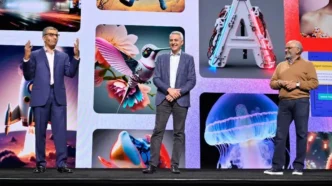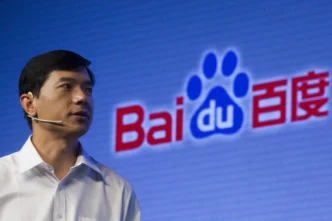Adobe has made a significant stride in enhancing its Firefly platform by integrating advanced AI models from OpenAI and Google Cloud. Unveiled at the MAX London creativity conference, the revamped Firefly is now a consolidated platform, uniting image, video, audio, and vector generation in a single tool designed to cater to AI-driven content workflows. This update positions Firefly as a comprehensive solution for creative professionals, integrating Adobe’s proprietary AI with external partner technologies to provide an all-in-one platform for content creation.
The latest version of Firefly represents a shift from a collection of individual tools to a unified platform powered by multiple AI models. Adobe has now incorporated its own proprietary models alongside cutting-edge AI technology from OpenAI and Google Cloud, giving users more flexibility in their creative processes. Further integrations are also in the pipeline, with upcoming partnerships with fal.ai, Ideogram, Luma, Pika, and Runway, among others.
David Wadhwani, President of Digital Media at Adobe, emphasized the transformative potential of the updated Firefly platform, stating, “With Firefly, we set out to transform creators’ experience by bringing image, video, audio, and vector generation together in a one-stop-shop for AI-assisted creativity. The new Firefly models and the integration of partner models give our users the ultimate choice as they bring their visions to life.”
This expanded capability positions Adobe Firefly as a powerful tool for organizations aiming to streamline content creation through AI, providing enhanced options for creative professionals who require advanced generative capabilities for their projects. By offering a variety of AI tools in one platform, Adobe ensures that users can create content in diverse formats while benefiting from seamless integration across different media types.
AI Models and Tools for Enterprise-Level Creativity
At the core of this launch are the Firefly Image Model 4 and Firefly Image Model 4 Ultra, which provide high-quality image generation at various levels of detail. The standard Firefly Image Model 4 generates 2K resolution images, ideal for marketing and production use, while the Ultra version focuses on intricate design details, making it suitable for complex enterprise projects. These models also include tools to adjust structure, style, zoom level, and camera angle, ensuring brands can maintain visual consistency across their content.
Firefly’s Video Model, which was previously in beta, is now fully available. This model enables users to generate 1080p video content from text prompts or images, with customizable features like lighting and focus to refine the output. Leading brands such as dentsu, Gatorade, PepsiCo, and Stagwell are already leveraging these tools for content production, showcasing Firefly’s growing appeal in the enterprise sector.
Additionally, Adobe has introduced a new Vector Model with text-to-vector functionality, allowing designers to create editable logos, icons, patterns, and packaging assets through natural language instructions. This feature significantly enhances the speed and flexibility of vector-based content creation.
In a bid to further improve collaborative workflows, Adobe has also launched Firefly Boards, currently in public beta. This tool provides a collaborative environment for brainstorming and storyboarding, helping creative teams align on concepts before executing designs. Adobe is also expanding its Firefly Services API framework, which enables businesses to embed AI capabilities directly into their production workflows, streamlining processes like asset reformatting and content customization.
Ethical AI and Transparency in Creative Processes
Adobe’s commitment to responsible AI development is reflected in its use of “commercially safe” practices, addressing concerns about intellectual property and creator rights. To ensure transparency, the platform includes Content Credentials, which label the origin of the content, and gives enterprise users the ability to control which AI models are accessible within their organizations.
Kevin Weil, Chief Product Officer at OpenAI, also commented on the collaboration, saying, “We’re pleased to work with Adobe to bring OpenAI’s image generation capabilities to its creators. Now, even more people will be able to create consistent, context-aware images using the Adobe creative suite they already know and use.”
This integration emphasizes Adobe’s belief that AI is a tool to enhance, rather than replace, human creativity. With the new features and AI partnerships, Firefly offers an expanded range of tools that empower creators, while maintaining ethical standards and a focus on user control.
The newly integrated Firefly Image and Video Models are now available via Adobe’s web-based application, with mobile versions planned for release in the future. As Firefly continues to develop, Adobe aims to provide an even more robust ecosystem for creative professionals, enabling them to seamlessly combine AI with their creative visions.













